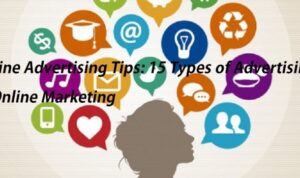Developing Product-Focused Content opens the door to a world of creative marketing strategies. Picture this: iconic brands showcasing their products in unique and compelling ways, driving customer engagement to new heights.
In this guide, we’ll delve into the essence of product-focused content and how it can revolutionize your marketing game. Get ready to explore the power of storytelling and visual appeal in captivating your audience like never before.
Understanding Product-Focused Content
Product-focused content is all about showcasing a company’s products or services in a way that highlights their features, benefits, and value to the target audience. It is crucial for businesses as it helps attract potential customers, educate them about what the products offer, and ultimately drive sales.
How Product-Focused Content Differs
Product-focused content differs from other types of content marketing, such as brand awareness or thought leadership, by directly promoting specific products or services. While other content types may focus on building brand reputation or providing industry insights, product-focused content aims to persuade consumers to make a purchase by emphasizing what sets the product apart and why it’s worth buying.
Successful Strategies by Well-Known Brands
- Apple’s Product Pages: Apple is known for its sleek and visually appealing product pages that highlight the key features of their devices, along with stunning images and videos to showcase their design and functionality.
- Samsung’s Comparison Guides: Samsung creates detailed comparison guides that help consumers understand the differences between their various product models, making it easier for customers to choose the right one for their needs.
- Nike’s Product Stories: Nike utilizes storytelling to bring their products to life, connecting with consumers on an emotional level by sharing the inspiration behind each product and how it can enhance their athletic performance.
Creating Engaging Product Descriptions

When it comes to writing product descriptions that truly captivate your audience and drive sales, there are key elements that you need to consider. From highlighting unique features to creating a sense of urgency, the way you craft your product descriptions can make all the difference in catching the eye of potential customers.
Key Elements of Engaging Product Descriptions
- Use vivid language that paints a picture in the customer’s mind.
- Focus on benefits rather than just features to show the value of the product.
- Create a sense of urgency by emphasizing limited quantities or time-sensitive offers.
- Include social proof such as testimonials or reviews to build trust with customers.
Tips for Writing Resonating Product Descriptions
- Know your target audience and tailor the tone and language to appeal to them specifically.
- Keep it concise and easy to read, avoiding jargon or overly technical language.
- Highlight the problem your product solves and how it improves the customer’s life.
- Use storytelling to create an emotional connection with the audience.
Examples of Effective Product Descriptions
-
“Experience the taste of paradise with our refreshing coconut water, sourced from the finest tropical coconuts.”
-
“Transform your morning routine with our energy-boosting coffee blend, crafted with premium Arabica beans for a bold and rich flavor.”
Utilizing Visual Content: Developing Product-Focused Content
Visual content plays a crucial role in product-focused marketing as it helps to grab the attention of potential customers and showcase products in a more engaging way. By incorporating visually appealing images, videos, infographics, and other multimedia elements, businesses can effectively communicate the features and benefits of their products to consumers.
Types of Visual Content
There are different types of visual content that can be used to showcase products effectively:
- High-quality Images: Clear and detailed images of the product from different angles can help customers visualize the product better.
- Product Videos: Short videos demonstrating the product in use can provide a more immersive experience for customers.
- Infographics: Visual representations of product features, benefits, and specifications can be presented in an easy-to-understand format.
- User-generated Content: Sharing photos and testimonials from satisfied customers can build trust and credibility.
Creating Visually Appealing Content
To create visually appealing content that highlights product features, consider the following tips:
- Focus on Lighting and Composition: Ensure that images are well-lit and composed to highlight the key features of the product.
- Use Consistent Branding: Maintain a consistent visual style and color scheme to reinforce brand identity.
- Add Text Overlay: Include text overlays on images or videos to emphasize important product information or calls to action.
- Show Products in Action: Demonstrate how the product can be used in real-life situations to help customers visualize its benefits.
- Optimize for Mobile: Make sure visual content is optimized for mobile devices to cater to the growing number of mobile shoppers.
Incorporating User-Generated Content

Incorporating user-generated content in product-focused marketing can bring numerous benefits to a brand. By involving customers in creating and sharing content related to your products, you can increase brand authenticity, build trust with your audience, and create a sense of community around your brand.
Successful User-Generated Content Campaigns, Developing Product-Focused Content
- Starbucks’ White Cup Contest: Starbucks encouraged customers to decorate their white cups and share photos on social media. This campaign generated a huge amount of user-generated content and boosted brand engagement.
- Lay’s “Do Us A Flavor” Campaign: Lay’s asked customers to come up with new chip flavors, resulting in thousands of flavor suggestions and increased customer engagement.
Tips to Encourage Customers to Create and Share Content
- Run Contests and Giveaways: Encourage customers to share photos or videos of themselves using your products for a chance to win prizes.
- Create Branded Hashtags: Develop unique hashtags for customers to use when posting about your products, making it easier to track user-generated content.
- Showcase User Content: Share and showcase user-generated content on your social media platforms to recognize and thank customers for their contributions.
- Offer Incentives: Provide discounts, exclusive offers, or special perks to customers who create and share content related to your products.





